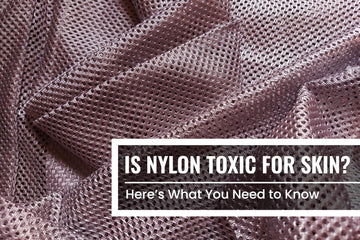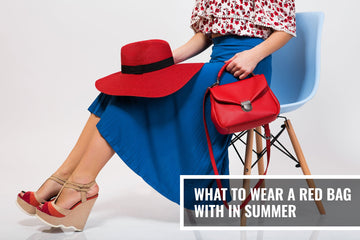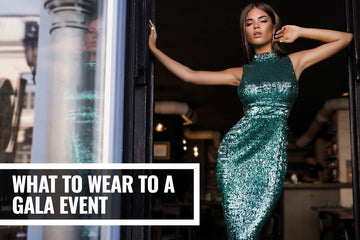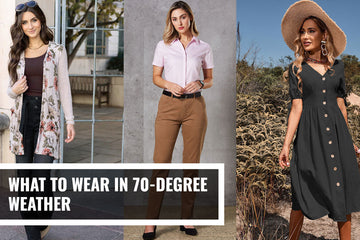How Do You Know If a Rolex is Authentic? Secret Tips
──── fashion
Hey there! So, you’re thinking about buying a Rolex, or maybe you already have one, but you’re wondering: “How can I be sure this Rolex is the real deal?” Trust me, you’re not alone! Rolex watches are iconic and come with a hefty price tag, so it's totally understandable that you’d want to make sure you're getting the genuine article. Whether you’re buying new, secondhand, or inheriting a family heirloom, it's important to know how to spot a fake.
I know, it can seem like a lot of pressure—there are so many knockoffs out there, and some are pretty convincing. But don’t worry! In this post, I’m going to walk you through everything you need to know about how to tell if a Rolex is authentic, from simple tricks to expert tips. By the end of this guide, you’ll be able to spot a real Rolex from a fake like a pro.
So, let’s get started.
Why It’s Important to Know If Your Rolex Is Real
Before we get into the details of how to spot a fake, let’s talk about why it matters. A Rolex isn’t just any watch—it’s a luxury timepiece with a rich history, incredible craftsmanship, and a serious price tag. If you’re dropping that kind of money, you want to make sure you're not getting scammed.
Here’s the thing: Rolex is one of the most counterfeited brands in the world, and scammers are getting better and better at creating convincing fakes. But with a little knowledge and some attention to detail, you can make sure you're getting the real deal. It’s also important to remember that a genuine Rolex can hold or even increase its value over time, while a fake? Well, it’s not going to get you much on the resale market.
1. Check the Weight
The first thing you'll want to do when checking if your Rolex is authentic is give it a feel. A real Rolex is made with high-quality materials, and that means it’s heavier than a fake. Counterfeit watches are often made with cheaper materials that are lighter and less durable.
What to Do:
- Pick it up and feel its weight. A genuine Rolex should feel solid and substantial in your hand. It shouldn’t feel too light or flimsy.
- If it feels light or cheap, that’s a major red flag.

(Image credit: @the1916company)
2. Inspect the Case Back
One of the easiest ways to tell if a Rolex is real or fake is to look at the case back. Real Rolex watches typically have a smooth, solid case back—no engravings or see-through windows (except for some rare models). Counterfeit Rolexes, on the other hand, may have engravings or displays that look cheap or poorly done.
What to Do:
- Flip the watch over and check the case back. If it has any engravings like “Rolex,” “Geneva,” or a window showing the inner mechanics, it's a fake.
- Note: Some models, like the vintage Rolex Submariner, may have a case back with some specific engravings, but in general, Rolex doesn’t engrave its case back.
3. Examine the Movement (The “Tick” Test)
Rolex watches are known for their smooth, continuous movement, which is something many counterfeit watches just can’t replicate. The second hand on a real Rolex should glide smoothly, with no jerking or ticking. If you’re hearing a ticking sound or if the hand is jumping in small increments, that’s a dead giveaway that the watch is fake.
What to Do:
- Look closely at the second hand. A genuine Rolex has a continuous sweep, so you shouldn’t hear or see the second hand ticking at intervals.
- Take note of the sound. If it’s a soft, continuous sweep, you’re likely looking at an authentic Rolex.

(Image credit: www.watchfinder.co.uk)
4. The Cyclops Lens: Magnification
The Cyclops lens on a Rolex is one of those signature features that set it apart. It’s the small, magnified lens above the date window that makes the date appear larger and easier to read. On a genuine Rolex, the Cyclops lens magnifies the date by about 2.5 times. On fake models, the magnification is often weaker or completely off.
What to Do:
- Look at the date window through the Cyclops lens. A real Rolex should make the date appear big and easy to read—about 2.5 times larger than it would without the lens.
- Check the clarity. The lens should be clear and free of distortion. If it looks blurry or doesn’t magnify the date properly, it’s probably a fake.
5. Check the Engravings
Rolex is known for its attention to detail, especially when it comes to engravings. The engravings on an authentic Rolex should be crisp, deep, and perfectly aligned. If the engravings on your watch look shallow, uneven, or poorly done, that’s a sign that the watch is not genuine.
What to Do:
- Zoom in on the engravings—especially the Rolex logo, the serial number, and model number. Use a magnifying glass if necessary.
- The engraving should be sharp and precise. On older models, the engravings might be a little more subtle, but they should still be clearly defined.
6. The Serial and Model Number
Every Rolex watch has a unique serial number and model number. These numbers are usually engraved on the side of the case, between the lugs (the part of the case that holds the bracelet). Checking the serial number is a quick way to verify authenticity. Rolex maintains a record of every watch sold, and you can cross-check the serial number with Rolex’s database or with a trusted jeweler.
What to Do:
- Check the serial and model number. These numbers should be finely engraved and easy to read.
- Cross-check the numbers with Rolex’s official records or with an authorized Rolex dealer.
7. The Bracelet and Clasp
Rolex bracelets are made from high-quality materials like stainless steel, 18k gold, and platinum. The links are solid and hefty, and the clasp should feel secure and well-made. Fake Rolex watches often use cheaper metal alloys or hollow links, which can make the bracelet feel light and flimsy. The clasp should also have the Rolex crown logo and a smooth, secure locking mechanism.
What to Do:
- Examine the bracelet closely. If it feels light or makes a tinny sound when you tap it, that’s a red flag.
- Check the clasp for smooth operation. It should open and close with a satisfying “click” and be easy to operate.

(Image credit: @casualdudereviews)
8. Check the Price
Okay, this one’s not exactly a physical feature, but it’s still really important! If you find a Rolex priced way below market value, that’s a big red flag. A genuine Rolex is an investment, and while you might find some deals, they’re not going to be that much of a steal. If someone is offering you a Rolex at a fraction of the price, there’s a high chance it’s a counterfeit.
What to Do:
- Research prices for the specific model you’re looking at. If it’s too good to be true, it probably is!
- Consider the seller—if it’s from an unauthorized dealer or someone online with no clear background, be extra cautious.
9. Take It to an Expert
If you’re still not sure about your Rolex’s authenticity after checking all these details, it’s time to take it to an expert. Many authorized Rolex dealers, jewelers, and watchmakers can verify the authenticity of your watch. They have the tools, knowledge, and experience to spot the smallest details that might be missed by an untrained eye.
What to Do:
- Consult a Rolex dealer or a reputable watchmaker. They can give you an official confirmation of whether your watch is real or fake.
- Get it professionally appraised if you’re unsure about its value or authenticity.

(Image credit: www.freepik.com)
FAQs: How to Know If a Rolex is Authentic
1. Can I check if my Rolex is authentic by just looking at the price?
While price isn’t a foolproof method to spot a fake, it’s a good starting point. If a Rolex is being sold for much lower than its typical market value, there’s a high chance it’s not genuine. Authentic Rolex watches are luxury items, so they will rarely be discounted drastically. Always research the market price for the specific model you're looking at before making any decisions.
2. Are there any obvious signs that a Rolex is fake?
Yes, there are several signs that can help you identify a fake Rolex, including:
- A lightweight feel due to cheaper materials.
- Poorly engraved logos or serial numbers.
- The second hand ticking or jerking, instead of sweeping smoothly.
- A misaligned or poorly magnified date window. If you notice any of these, it’s likely your watch is not a genuine Rolex.
3. How can I check the authenticity of my Rolex without opening it?
If you don’t want to open your Rolex, the easiest way is to check its weight and the movement. A real Rolex should feel solid and heavy, and the second hand should move smoothly without ticking. Also, the Cyclops lens above the date should magnify the date 2.5 times. If any of these features seem off, you may want to take the watch to a professional for a closer inspection.
4. Can a Rolex be authentic if the serial number is worn off?
The serial number on a Rolex is crucial to identifying its authenticity. If it’s worn off, that’s a red flag. Rolex engraves its serial numbers deeply, so they shouldn’t wear off over time. If you can't find the serial number or it’s too faint to read, it could indicate that the watch is a fake, or it’s been tampered with.
5. How can I tell if a Rolex I bought secondhand is real?
When buying a secondhand Rolex, always ask for paperwork or proof of authenticity. Reputable sellers should provide documentation like a certificate of authenticity or a warranty card. It’s also a good idea to have the watch appraised by an authorized Rolex dealer or watchmaker to verify its authenticity. Always do your research and buy from trustworthy, well-established sources.
6. Is there a way to check if the Rolex is real using the serial number?
Yes! Every Rolex has a unique serial number that can be cross-checked with Rolex’s database. Some authorized dealers or watchmakers may be able to verify it for you. This step is especially important if you’re buying a vintage Rolex. The serial number, usually located between the lugs, should match the watch’s model and manufacturing date.
7. What should I do if I suspect my Rolex is a fake?
If you suspect your Rolex is fake, don’t panic! Take it to a professional Rolex dealer or a reputable watchmaker for verification. They will be able to closely inspect the watch, and you’ll get an expert opinion on whether it’s real or not. If it turns out to be a counterfeit, you may want to consider returning it or taking legal action, depending on where you purchased it from.
Final Thoughts
Whether you’re buying a Rolex for yourself or inheriting one from a family member, knowing how to check if it’s authentic is crucial. A genuine Rolex is more than just a luxury timepiece—it’s a symbol of craftsmanship and quality that holds its value over time. By paying attention to the details like weight, engraving, the movement, and the bracelet, you can avoid being tricked by a fake.
Remember, don’t rush into a purchase—take your time, do your research, and trust your gut. When in doubt, always consult with a professional.
Have you bought or thought about buying a Rolex? Have you ever come across a fake one? Share your thoughts and experiences in the comments! Let’s keep the conversation going.
Until next time, happy watch hunting!










